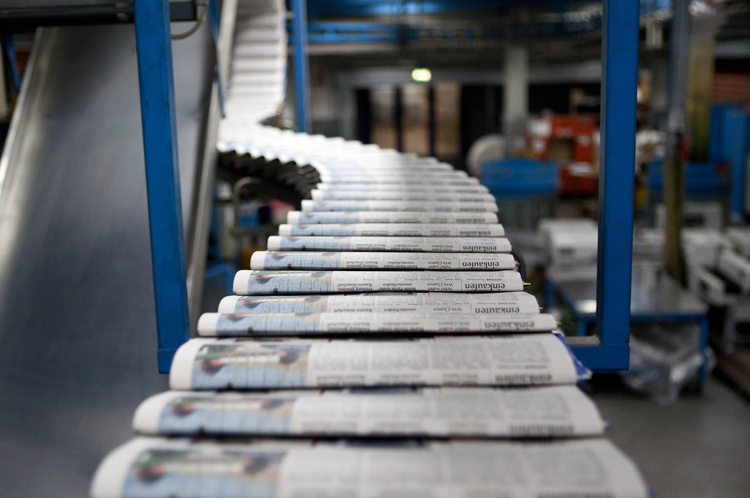The German paper industry is the largest in Europe and the fourth largest in the world, producing 3,000 different types of paper, cardboard and paperboard. Nevertheless, printers and publishers throughout Germany are currently suffering from an acute shortage of graphic paper. This is becoming a problem for newspapers and leaflets. These are produced from waste paper, which is in short supply due to the pandemic: waste paper cannot simply be produced, but must first be generated, for example from old newspapers and inserts that enter the recycling cycle. In the past 1 ½ years, however, fewer adverts have been printed and inserts booked, resulting in newspapers with a smaller page count. Now that demand is rising again, the effects are becoming apparent.
The strong growth in online retail is also fuelling the situation. As a result, more and more packaging material such as cardboard boxes and parcel boards were required to ship goods. Last year, the extreme demand prompted many paper producers to convert their machines in order to compensate for the slump in the newspaper and insert business.
And as with any shortage, the crisis is also reflected in prices. Prices are rising rapidly: the cost of a tonne of deinking waste paper, which is required for the production of graphic papers, more than tripled in August. The entire supply chain is in difficulties, the shortage of raw materials and the high price increase are already leading to the first cancellations.
Print shops often find their hands tied. "We are doing everything we can to procure the necessary quantities of paper and minimise the disruption to our customers caused by the limited availability. Unfortunately, however, this can even lead to production and delivery cancellations," reports Ralph Dittmann, Managing Director of WKS Druckholding GmbH. "The situation is absolutely unacceptable for our customers and even threatens the existence of printers!"
Axel Gleie, Managing Director of NOZ/mh:n MEDIEN, is concerned about the current developments: "Due to the drastic price increase, we run the risk that a whole series of our weekly newspapers will no longer be able to be produced at all or only in small print runs and volumes. The current developments are therefore not only dramatic for paper manufacturers, printers and publishers, but also for advertisers. In addition, the publishing industry is being burdened by rising energy costs and a probable minimum wage increase to €12.00 per hour. Ultimately, this development jeopardises the diversity of opinion and the press in our country and therefore also our democracy."
Printers and publishers now need one thing to be able to plan and operate reliably: Reliable partnerships with advertising companies. "In such turbulent times, respectful and long-term partnerships pay off across the entire supply chain," says Johannes Helmberger, Managing Director of Druckerei Niedermayr. The expert explains: "The current focus is on paper. But things aren't looking any better when it comes to auxiliary materials such as silicone, wire, ink, printing plates or logistics. Only with a clear commitment to print and stable partnerships can we get the situation under control again."
Klaus Tsaoussidis, Head of Purchasing Media Services at MEDIA Central, relies on close communication: "So far, we have been able to place all of our customers' orders and have not had to report any cancellations. Fixed and long-term contracts with print shops have secured the order situation in many places. We are keeping a close eye on the situation and are in regular dialogue with printers and publishers."
Nobody can say how long the shortage will last. However, timely and reliable planning of new orders in 2022 will help print shops and publishers to tackle the crisis.

